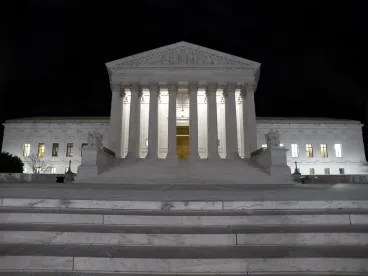On Friday, June 22, 2019, in Knick v. Township of Scott, the U.S. Supreme Court overturned Williamson County Regional Planning Commission v. Hamilton Bank and, in the process, paved a direct path to federal court for landowners asserting takings claims.
For almost 35 years, Williamson County forced landowners to assert their takings claims in state court before proceeding to federal court. After exhausting their claims in state court, and only after exhausting their claims in state court, could landowners proceed to federal court. To make matters worse, the Constitution’s Full Faith and Credit Clause requires federal courts to recognize state court judgments. As a result, an adverse ruling in state court often precluded landowners from asserting their claim in federal court.
No longer. In Knick, a Pennsylvania township attempted to enforce an ordinance requiring that all graveyards be open to the public during the daytime against Ms. Mary Rose Knick, who has a small graveyard on her property. Ms. Knick sued the township in federal court, alleging that the township’s attempt amounted to an unconstitutional taking. The U.S. District Court for the Middle District of Pennsylvania dismissed her suit, citing Williamson County for the proposition that a petitioner-landowner’s federal takings claim is unripe until the plaintiff prosecutes an inverse condemnation action in state court. The U.S. Court of Appeals for the Third Circuit, also citing Williamson County and its progeny, affirmed. But in a 5-4 decision, the U.S. Supreme Court vacated the Third Circuit’s decision, overruling Williamson County ’s state-litigation requirement and making clear that a taking occurs at the time that the Government deprives the landowner of its property regardless of when the Government provides (or does not provide) for just compensation.
The most direct and immediate effect is that landowners need not exhaust takings claims in state court and can proceed immediately to federal court. The general consensus suggests that this is good for landowners, as state courts tend to be friendlier to local governments than federal courts. Yet landowners should be wary of the conventional wisdom, as this is, without question, jurisdiction-dependent. Federal courts within the jurisdiction of the U.S. Court of Appeals for the Fourth Circuit, for example, are notoriously difficult places for landowners to succeed against local governments. Thus, Knick may open the door for landowners to bring claims straight to federal court; however, landowners should examine the precedent of their particular jurisdiction before walking through it.
The more latent, but perhaps more important, effect for landowners and local governments is the Court’s explanation that a taking occurs at the time that the Government deprives the landowner of property, not when the landowner has been denied just compensation. The majority opinion emphasizes that this was always the case. Whatever the truth of that proposition, many would have said otherwise before Knick. In effect, this makes clear that the government is guilty of violating the takings clause at the time that it enacts legislation or regulation that deprives a landowner of property rights, even if the Government later pays just compensation. In turn, the landowner can file a claim pursuant to Section 1983 for a deprivation of a constitutional right at the time of the deprivation—the landowner need not wait until the Government denies just compensation. It is too early to say how landowners could otherwise use this decision to their advantage, but suffice it to say that the Court’s rationale will likely give local governments pause before enacting laws that may invite immediate challenges under the takings clause in federal court.
Knick also may be a sign of things to come in Supreme Court jurisprudence, more generally. Initially, as Justice Kagan points out in a blistering dissent, the Court’s willingness to overturn Williamson County’s central holding, despite the fact that it had been on the books for almost 35 years, may portend other departures from existing precedent. In fact, much of the press coverage of Knick has focused less on its ramifications for landowners and more on what it means forstare decisis in other cases before the High Court. Further, Knick may signify growing protections for property rights at the Court. The Supreme Court first heard the case before Justice Kavanaugh took the bench, but then reheard the case after his confirmation. Many have speculated that the Court was reheard because the justices were split 4-4. In any event, the fact remains that the Court’s decision fell along ideological lines and has property-rights advocates excited for other hot-button issues to reach the Court.



 />i
/>i

